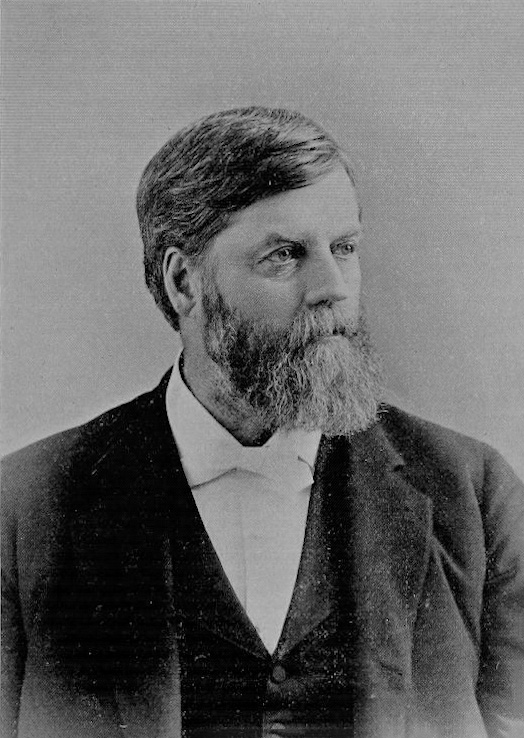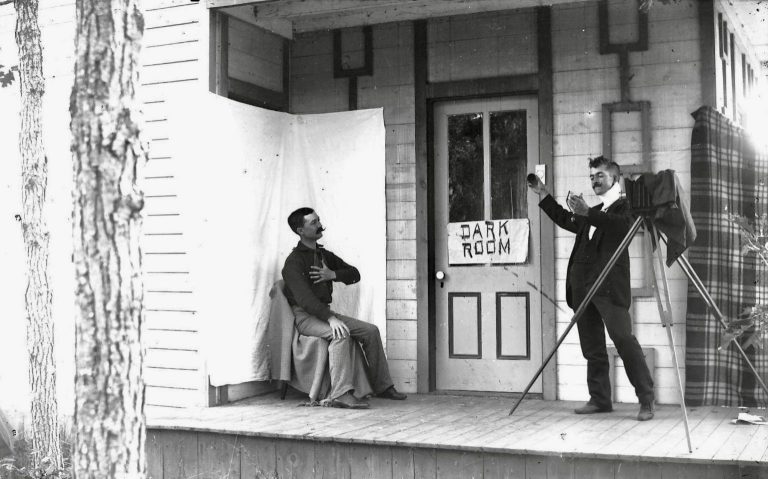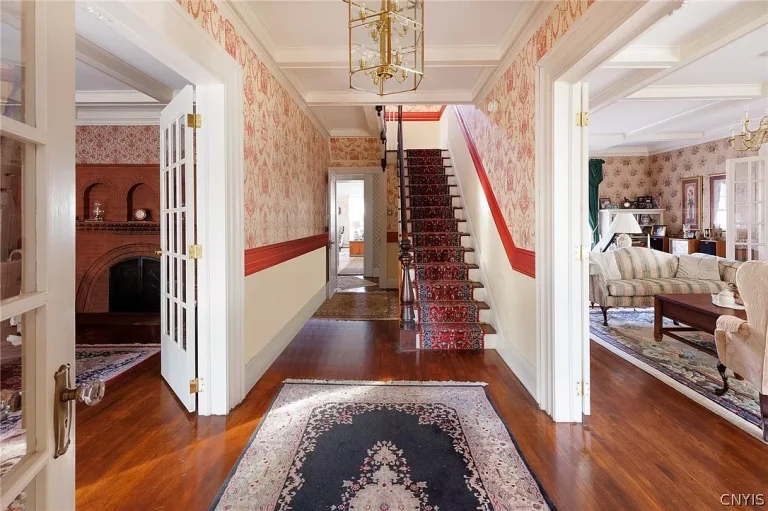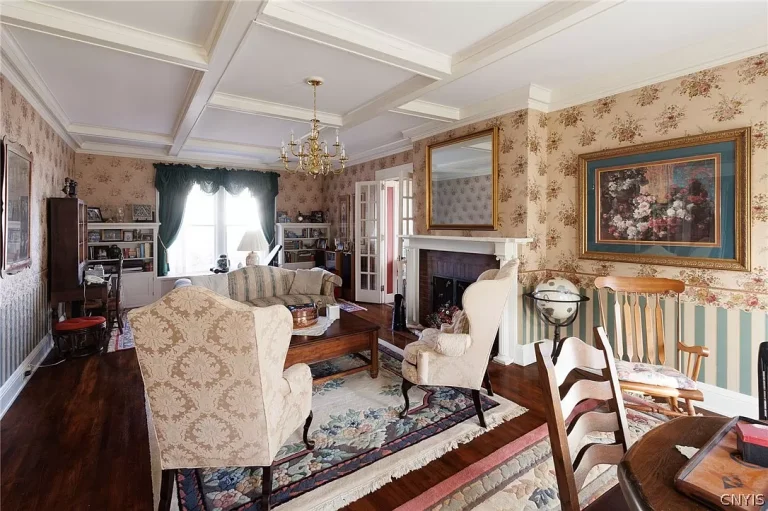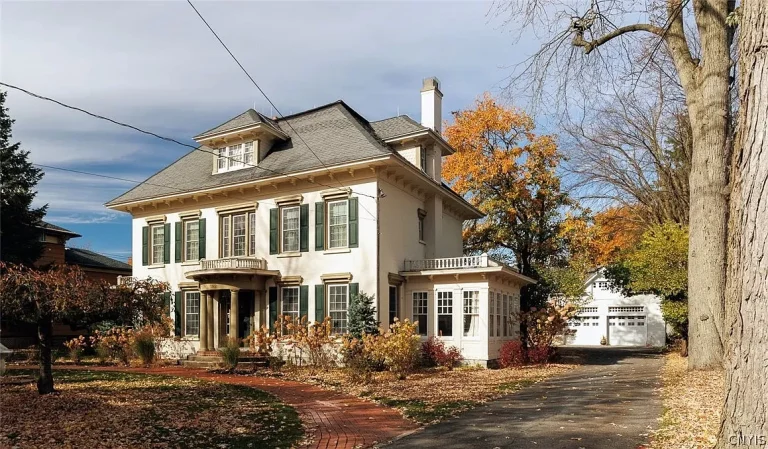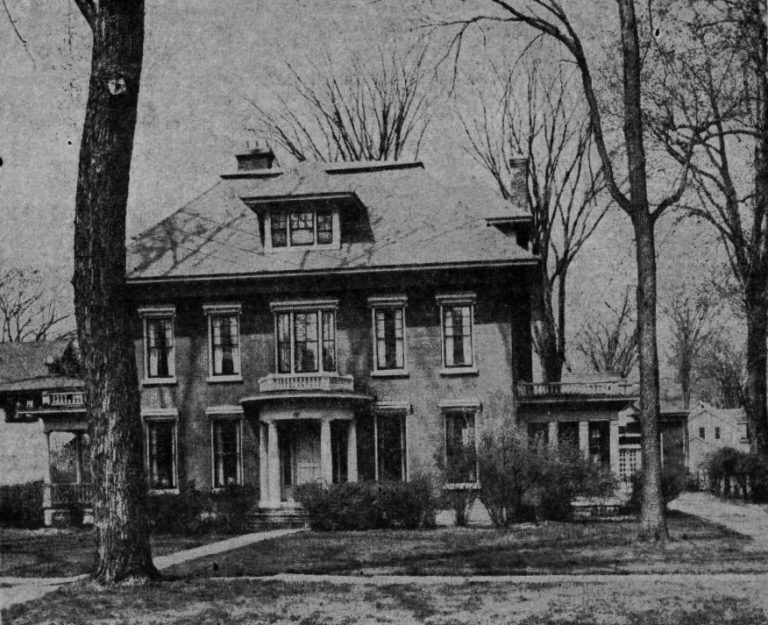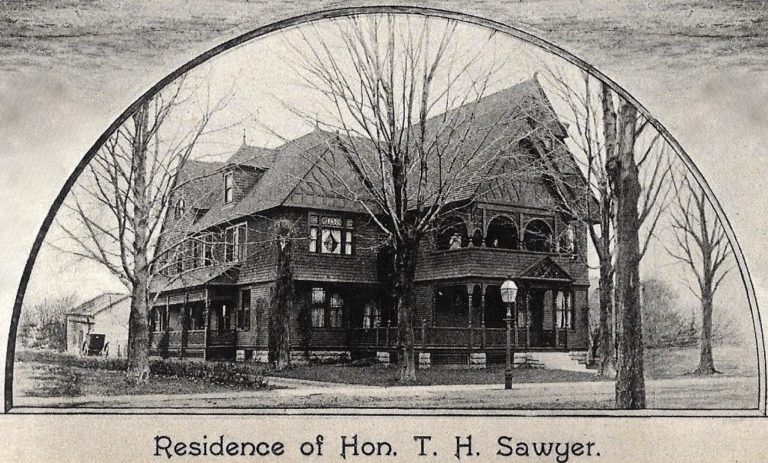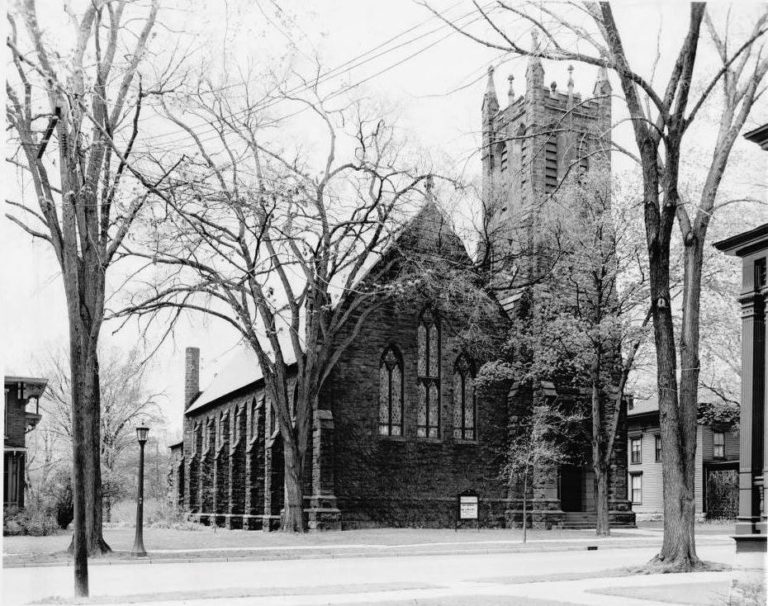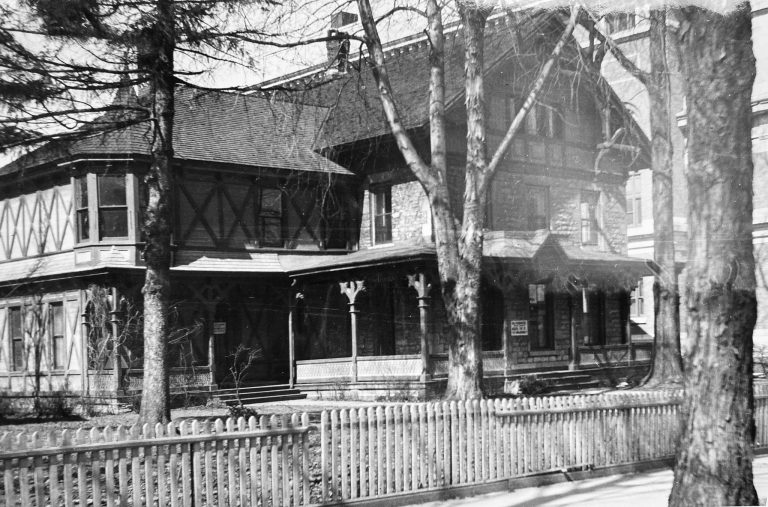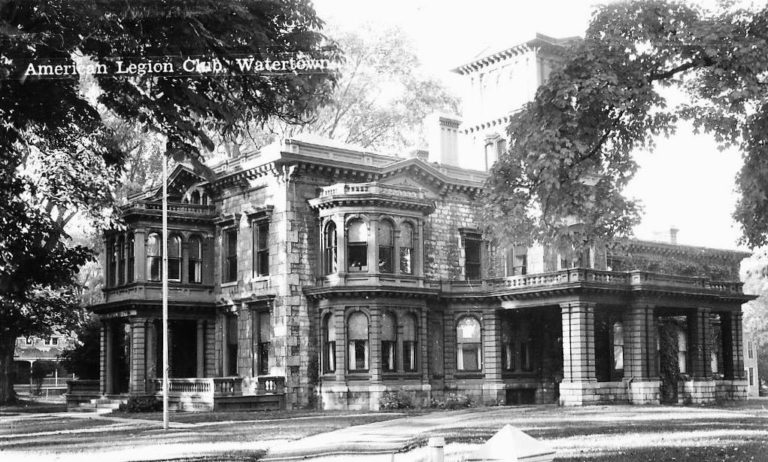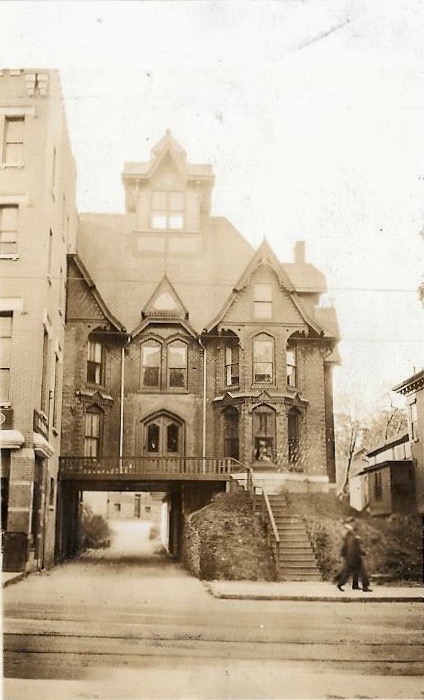162 Paddock Street’s Long History of Notable Owners Includes William W. Herrick, Herbert R. Huested, and Supreme Court Justice Pardon C. Willams
The recorded history of what is now 162 Paddock Street goes back to when the plot of land was part of a tract of subdivisions owned by Oscar and Edwin L. Paddock. Mrs. Nancy Bartlett of Oswego purchased the parcel of land from the Paddock brothers on January 5th, 1853. The house that stands there now was constructed in 1853 and sold the following year to the first of many prominent owners over the course of the last 170 years.
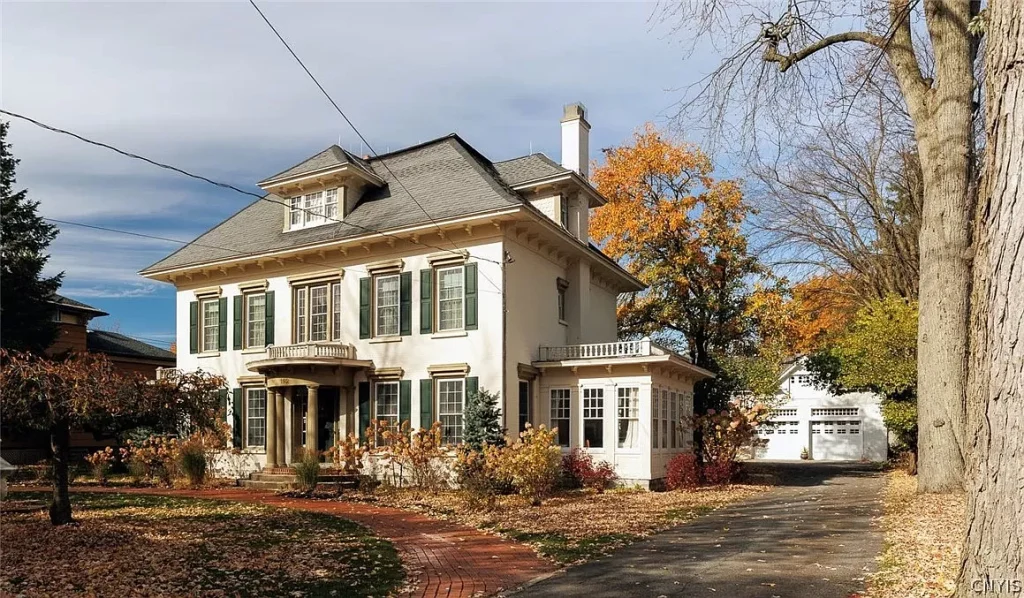
Originally bearing the street address of 14 Paddock Street until 1908, when the city switched to block numbering, the house was purchased by William W. Herrick, a local dry goods merchant, on November 20, 1854. At the time, Herrick was the village of Watertown’s treasurer and a merchant. He later was part of the dry goods firm Herrick, Sisson & Avers, with Humphrey Sisson and Henry H. Avers, with a store located at 7-8 Washington Place.
Over the years, Sisson became no longer active, and the firm, now Herrick & Ayers, was located at the Commercial (later named Taggart) Building on Public Square. By the late 1880s, the firm had run into financial problems and closed in December of 1889. Herrick afterward entered the insurance business for a short time before his death. The Watertown Daily Times reported on June 8, 1891—
Many people in Watertown and throughout the county will learn with deep regret of the affliction which has overtaken and aged and highly respected resident of this city, William W. Herrick, formerly the senior of the firm of Herrick & Ayers. Mr. Herrick and his wife have recently been boarding with Mrs. J. M. Canfield at 65 Washington Street, but some of their household goods are still at their old home, No. 14 Paddock Street.
Yesterday noon Mr. Herrick went to the latter place for something and did not return at supper time. Friends went to the house on Paddock Street and found him lying on the floor, face downward, in one of the upper chambers.
He was apparently unconscious and utterly helpless. He was carried to the city hospital, where he has had the best medical attendance. But the latest report today is that his condition has not materially changed since he was found, except that he is perhaps somewhat weaker.
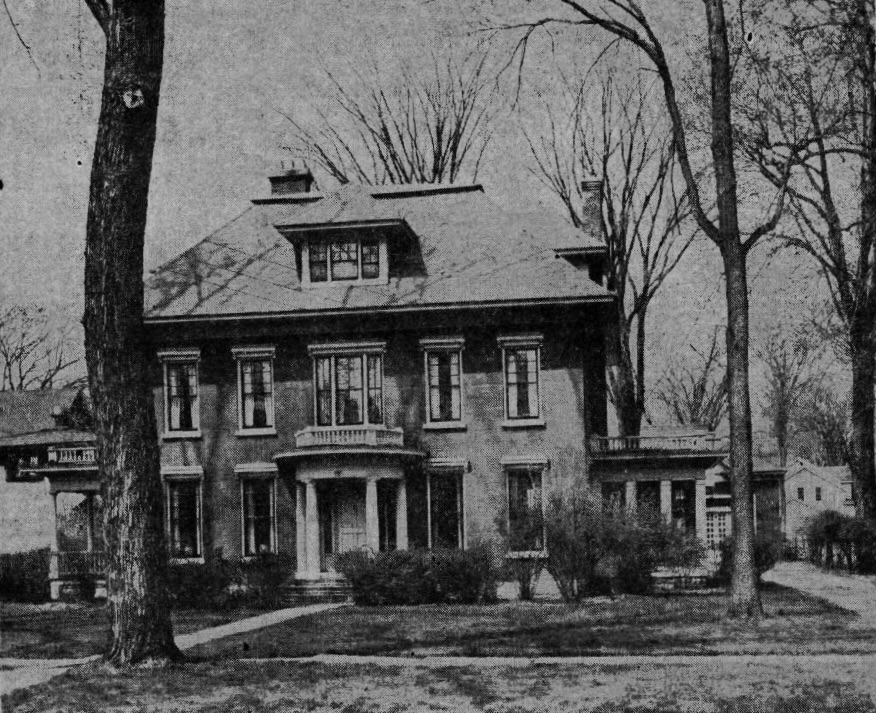
Herrick passed at 6:40 a.m. the following morning. His obituary noted that, during the Civil War, he traveled to St. Louis, where he was stationed as a Paymaster in the Army. His travels also took him to the Mississippi River and back to New York, where he delivered discharged soldiers and “one time passed through Watertown with several hundred thousand dollars in his possession, to pay troops in Ogdensburg.”
Prior to his death, the home was sold on March 26, 1890, by Sheriff Willard E. Sale, to the Jefferson County National Bank to settle a mortgage against Mrs. Catherine P. Herrick (it is presumed this was his wife.) The bank, in turn, sold it to local architect Daniel Kieff and his wife, Elizabeth, on October 26, 1891, thus beginning a string of sales. The property was ultimately owned by Hanna E. Goulding from March 1892 to June 20, 1901, when she sold it to Supreme Court Justice Pardon C. Williams.
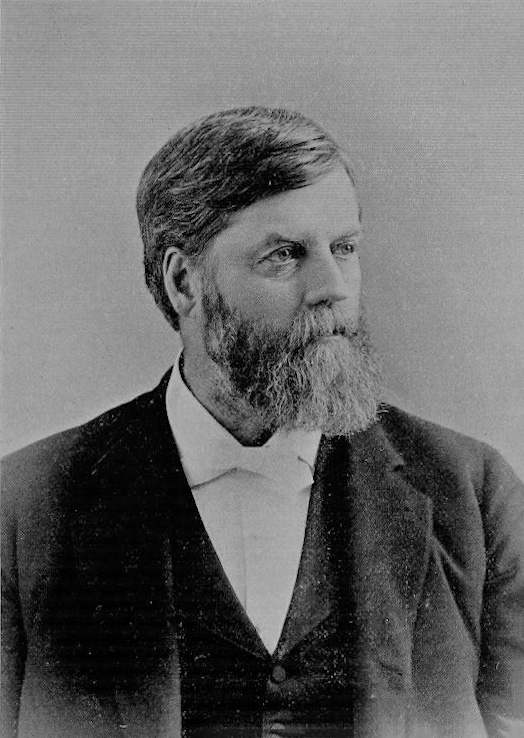
Justice Williams was born July 12, 1842, in the town of Ellisburg, later attending school at Pierrepont Manor and Union Academy, Clinton Liberal Institute, and St. Lawrence University. He became involved with the local firm Hammond & Bigelow in 1862-3 and was admitted to the bar in October of the latter year, becoming a partner with Hammond.
After forming other partnerships and serving as District Attorney for two terms, he became a Supreme Court Justice in 1884 and oversaw the infamous murder case involving Roxalana Druse, who murdered her husband William in the town of Warren, Herkimer County, which brought about the last execution by hanging in New York State. The grisly murder and its details are better left for Halloween.
During his many years of ownership, 162 Paddock Street was also occupied by his son, Robert P. Williams, and his family. Pardon also had a residence at 167 Ten Eyck Street, selling it on August 10, 1917, to Dr. James E. Campbell of Dexter, treasurer of the Sulphite Pulp & Paper Company. He would move his belongings from the Ten Eyck Street address to 162 Paddock Street, where he resided for the remainder of his life, passing on January 18, 1925.
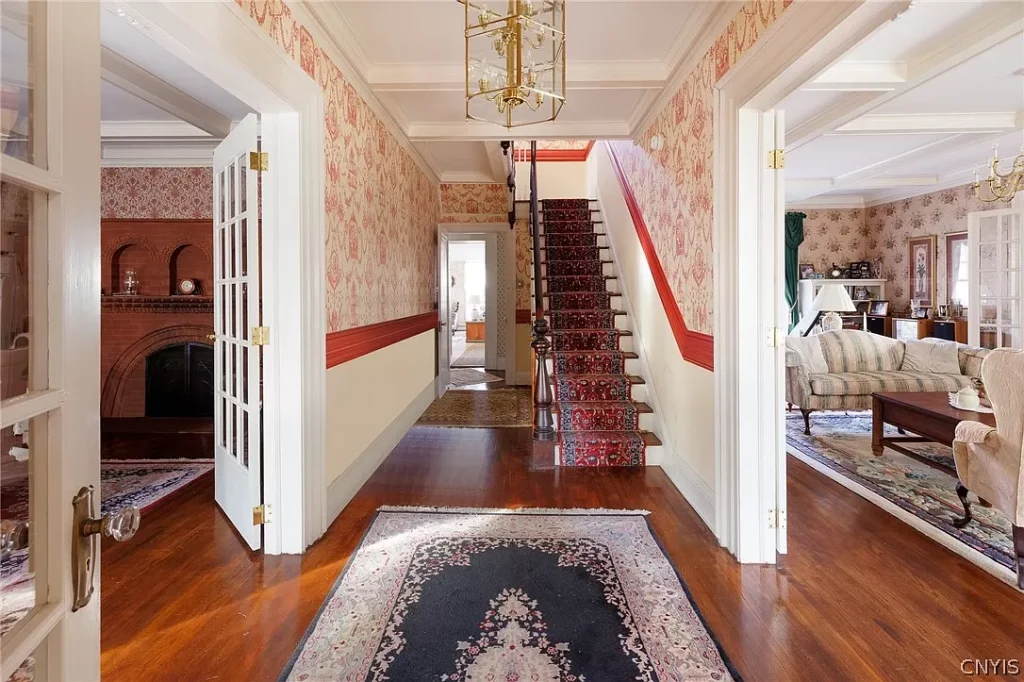
A little over four years later, 162 Paddock Street transferred from Justice Williams’ estate to Herbert R. Huested, a well-known North Country photographer, and his wife, Juliet Salisbury Huested. Huested had once operated his studio out of the former Oscar Paddock carriage house on Stone Street after accompanying his father in the business in Mannsville.
As written in David Lane’s article on the history of 162 Paddock Street—
On October 23, 1895, Mr. Huested was married to Miss M. Juliet Salisbury, daughter of Mr. and Mrs. (Helen Maria Warriner) Moreau J. Salisbury of Sandy Creek and from the marriage were born three children, Richard S. Huested, Mrs. (Florence) Draper and Mrs. Helen H. Huggins.
Before moving into their new home, the Huesteds made alterations around the house, later reported as improving the entire interior, to include, amongst other things, a new fireplace. The exterior benefited from the construction of the half portico still seen at its entrance to this day. The home then became a regular meeting place for the Northern Frontier Chapter, Daughters of 1812 meetings.
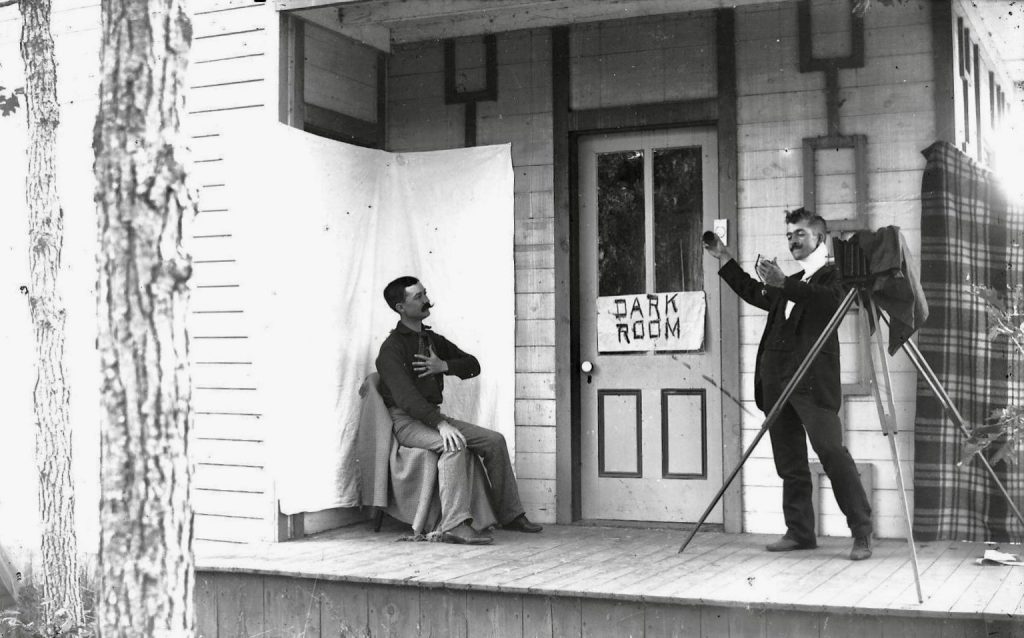
Herbert died at the age of 69 on January 12, 1944. His sister-in-law, Fanny C. Salisbury Wood, who resided at the residence since 1936, passed away at the age of 76 later in 1944. Herbert’s widow, Juliet, continued living in the residence until June 1958, after which she lived the remaining two months of her life at The House of the Good Samaritan at the age of 58.
Two years later, the brick colonial house was sold by Florence Draper, executrix of her mother’s estate, to Dr. and Mrs. (Margaret Elizabeth Foley) John “Jake” F. Flood of 383 Cosgrove Street. The advertisements for 162 Paddock Street at that time described it as having a large living room, kitchen, and accessory rooms on the ground floor, five bedrooms, a large central hall, two and a half bathrooms, and an attractive semi-circular portico outside. The property also included a large two-stall garage behind the main property.
Dr. Flood had a long and distinguished career in medicine, beginning the practice of neurosurgery in Watertown along with his father and brother, Anthony J. and A. James Flood, Jr., in the Electric Building on Feb. 1, 1957. He retired on Feb. 4, 1983.
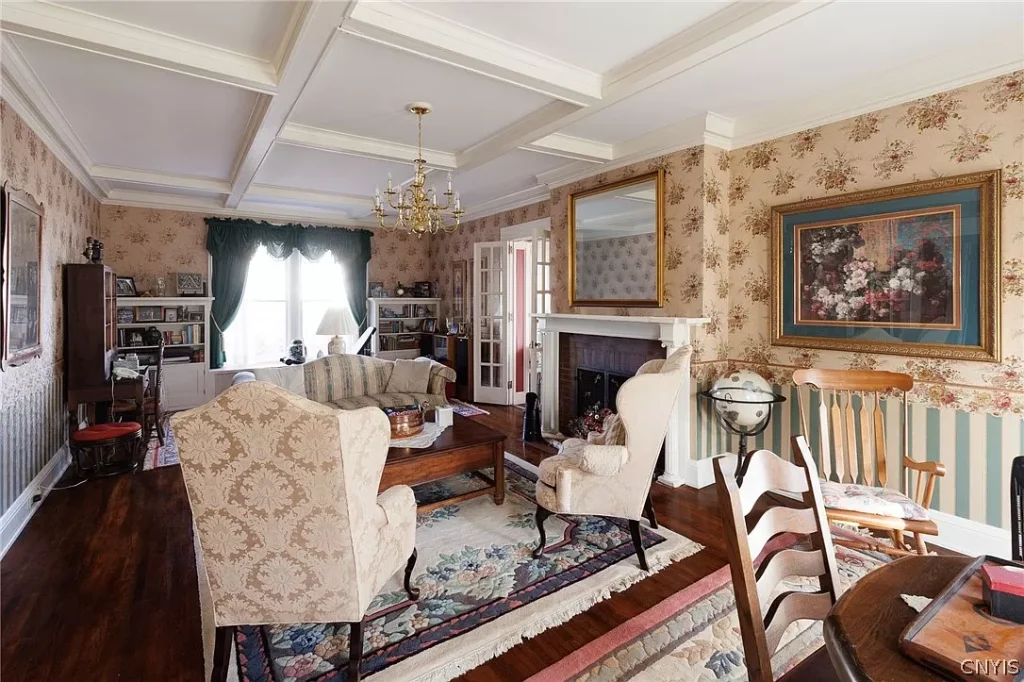
Prior to his practice, his medical residency was interrupted in 1953 when he was called into the Army and served seven months in Korea with the 46th Mobile Army Surgical Hospital. He received a doctor of medicine and master of surgery degrees from Queen’s University, Kingston, Ontario, in 1950, interning at Queen’s General Hospital.
Margaret passed away at home on February 8, 1990, at the age of 68. Dr. Flood also passed away at home on November 14, 1998, at the age of 77.
The home would soon go onto the market, purchased by Richard E. Alexander, Jr., c. 2000. Richard was inducted into Rotary International’s prestigious Arch C. Klumpf Society in Evanston, Ill—fewer than 100 out of 1.2 million Rotarians earned this achievement.
Most recently, Brandon and Sarah Fults purchased the property from Richard E. Alexander, Jr., in January 2023.
